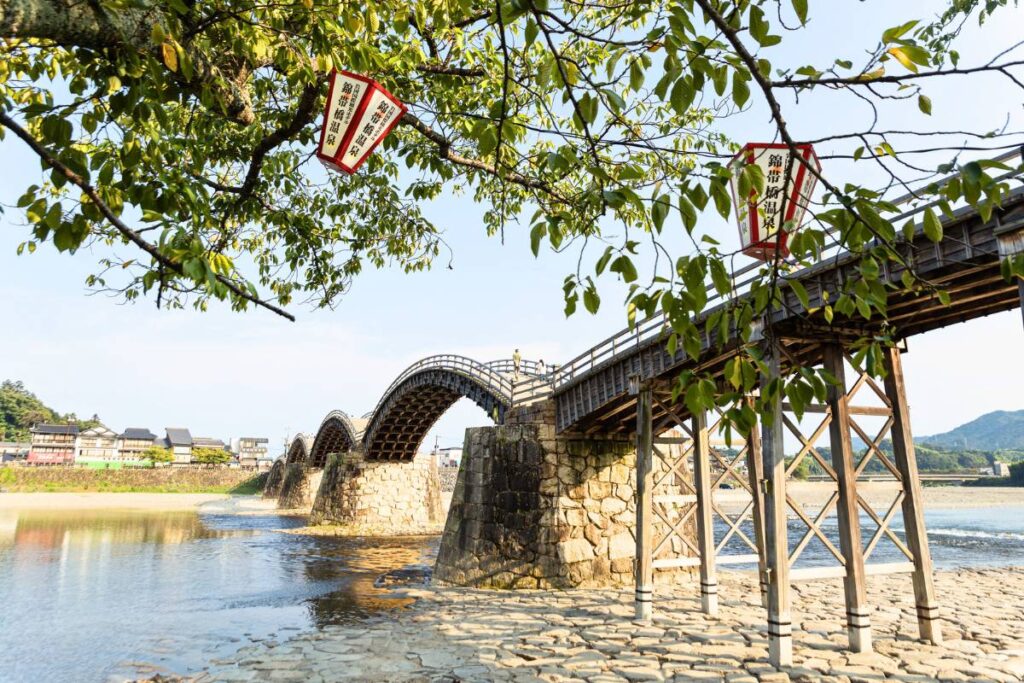
Visiting Iwakuni, Japan? But aren’t sure what to do when you get there? Don’t worry! I’ve got you covered with this ultimate list of things to do in Iwakuni!
Nestled off the beaten path, Iwakuni is a charming city known for its rich history and stunning natural beauty.
While it might not be the first name that comes to mind when planning a trip to Japan, Iwakuni is a must for anyone seeking authentic experiences and unique attractions.
From towering mountains to cascading waterfalls, historical landmarks, lively festivals, and scenic beaches, Iwakuni truly has a bit of something for everything.
And, luckily for you, I have all the insider scoop. As someone who calls Iwakuni home, I’ve had the opportunity to discover many of its hidden gems – and I’m so excited to share them all with you!
That being said, let’s dive right in and uncover the best things to do in Iwakuni, Japan.
*Please note: This post contains affiliate links to trusted partners. If you make a purchase using these links, I will earn a commission at no extra cost to you. Thank you for your support!
Where is Iwakuni, Japan?
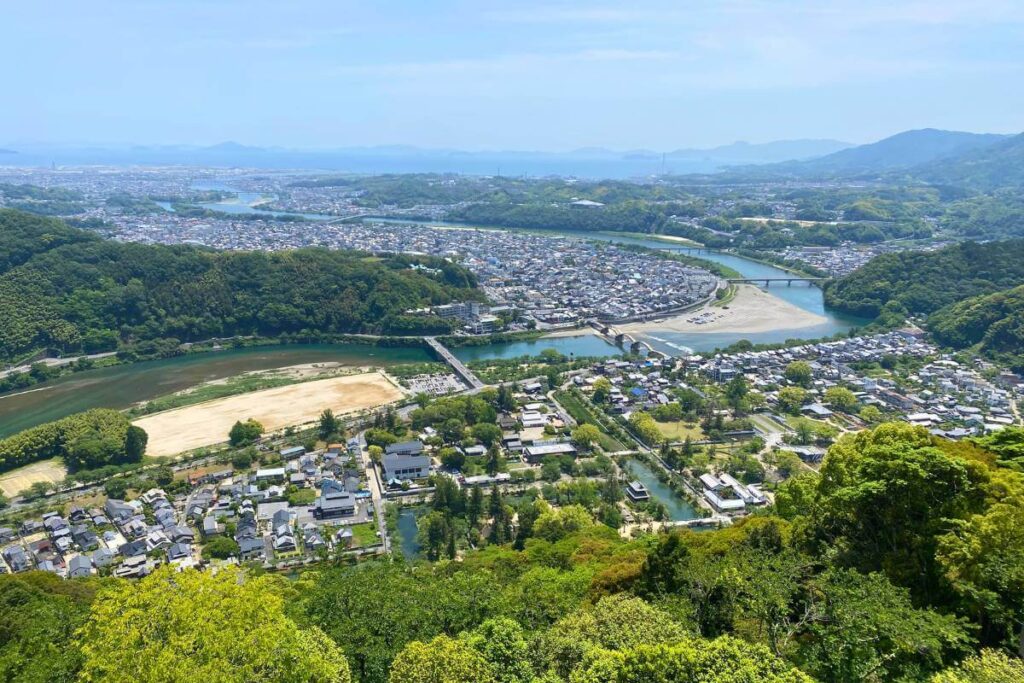
View of the city from Iwakuni Castle.
Situated between the mountains and the Seto Inland Sea, Iwakuni is a small city that lies along the southeastern coast of Honshu Island in Yamaguchi Prefecture.
The city is located about 42 kilometers south of Hiroshima. So it makes for a quick and easy day trip for those who may be short on time.
If you plan to travel by train from Hiroshima to Iwakuni, you can either take the Shinkansen (bullet train) to Shin-Iwakuni Station. Or you can take the local train to Iwakuni Station.
While the Shinkansen only takes about 15 minutes, the local train takes closer to an hour – but is quite a bit more affordable.
There’s also an airport located in the city – Iwakuni Kintaikyo Airport (IWK). This airport services direct flights from Tokyo and Okinawa.
Best Time to Visit Iwakuni
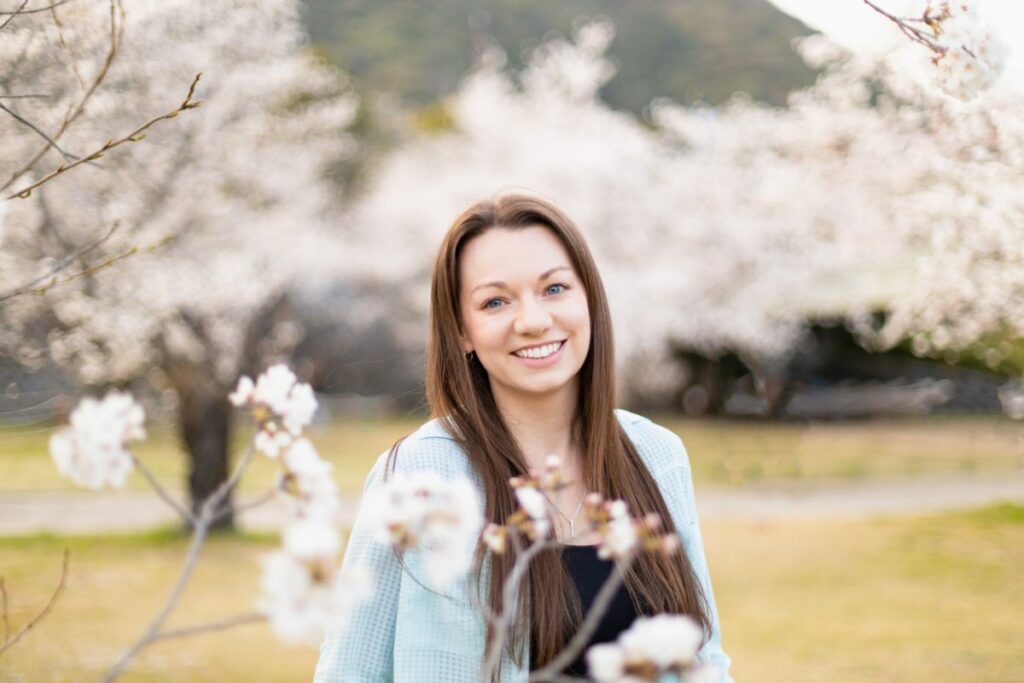
Spring is a great time to visit Iwakuni!
Like much of Japan, Iwakuni is a great destination to visit any time of the year. However, if I had to narrow it down – I’d recommend either spring or fall.
Simply put, this is when you’ll encounter the best weather with mild temperatures and minimal rain.
On top of this, the city is especially beautiful during these times of the year, specifically in the spring when the cherry blossoms bloom.
That being said, it’s important to note that cherry blossom season is also peak travel season for the city. So, if you wish to avoid the crowds, then you’ll probably be better off coming in the fall.
Aside from this, winter is another great option to consider. While temperatures will be quite a bit cooler, it’s significantly less crowded and more affordable.
And finally, we have summer – which is honestly my favorite time of the year. It’s beautiful, sunny, warm, and the city is lively with fireworks and local festivals.
But at the same time, it can also be very rainy and extremely hot (which I know isn’t everyone’s cup of tea).
So, unless you’re really flexible with your plans and don’t mind the heat, I’d say avoid the summer and come another time.
How to Get Around Iwakuni
While there are public buses available in Iwakuni, the routes and timetables offered can be quite limited.
If you’re planning to simply visit the touristy areas of the city, you’ll be fine utilizing public transportation.
However, if you plan to explore beyond that (which I highly recommend), you’ll likely need to either rent a car or hire a taxi.
Car rental companies can be found in the downtown area near Iwakuni Station. Meanwhile, taxis are readily available throughout the city.
For those interested in utilizing the public bus, you’ll need to obtain an IC Card, which is essentially a prepaid, refillable transportation pass.
This can be purchased at most train stations or it can be downloaded to your Apple Wallet if you have an iPhone (unfortunately, this option isn’t available for Android users yet).
These transportation passes are accepted on most forms of local transportation throughout Japan, so it’s very convenient to have if you plan to travel around the country.
That being said, please keep in mind that IC cards cannot be used on the Shinkansen, limited express trains, and highway buses. These forms of transportation typically require their own separate ticket.
Pro Tip: Download Google Maps and use it to help you navigate the city (by bus or by car). This app is one of the best navigation apps for Japan, as it syncs with local public transportation and provides accurate, up-to-date transit information.
Driving in Japan
If you plan to rent a car in Japan, make sure you look into the Japanese license requirements specific to your home country. Depending upon where you reside, you might need to obtain an International Driver’s Permit or a translated copy of your home country’s driver’s license. In some specific cases, you may even be required to obtain a Japanese driver’s license.
For those traveling from the United States, Canada, Australia, Singapore, and most European countries, an International Driver’s permit is required. You can obtain this from an authorized automobile association in your home country.
Iwakuni, Japan Map
To help you plan your trip, here’s a quick map overview of all the places mentioned in this guide to Iwakuni.
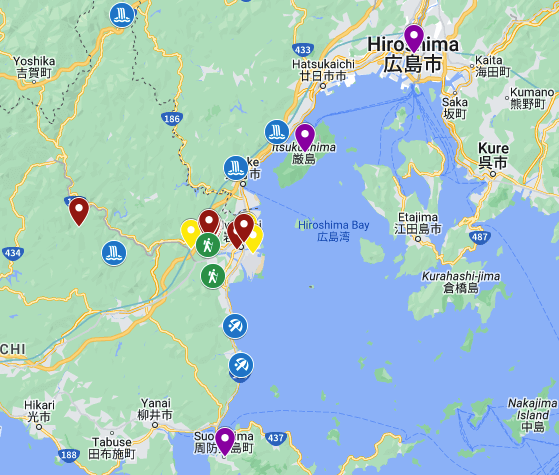
If you’d like to view an interactive version of this map, click here!
10 Fun Things to Do in Iwakuni, Japan
Without further ado, here’s the ultimate list of things to do in Iwakuni!
Discover Kintaikyo Bridge
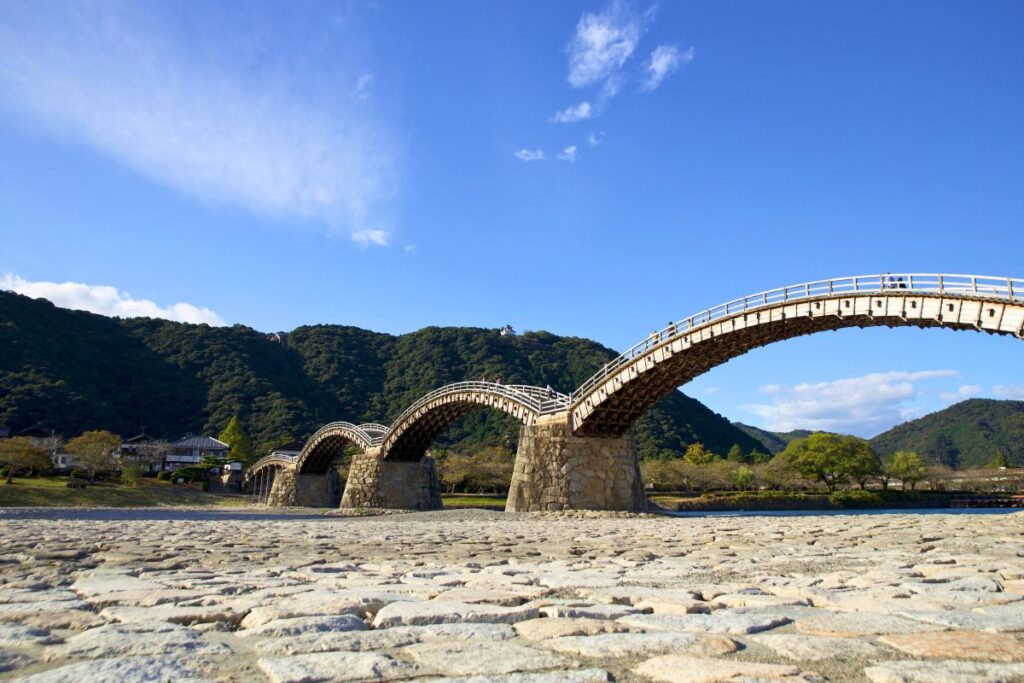
Also known as Kintai Bridge, Kintaikyo is one of the most famous bridges in Japan.
Designated as a national site of scenic beauty, this historic pedestrian bridge dates back to the 1600s, when it was almost exclusively used by samurais.
Today, it’s celebrated as one of Iwakuni’s most distinguished landmarks and is the focal point of many local celebrations and events.
For a small fee, visitors to the bridge are welcome to walk across its five graceful wooden arches as they travel over the Nishiki River.
Pro Tip: Looking for a place to stay in Iwakuni? Check out Iwakuni Kokusai Kanko Hotel – it offers great views of Kintai Bridge!
Stroll Through Kikko Park
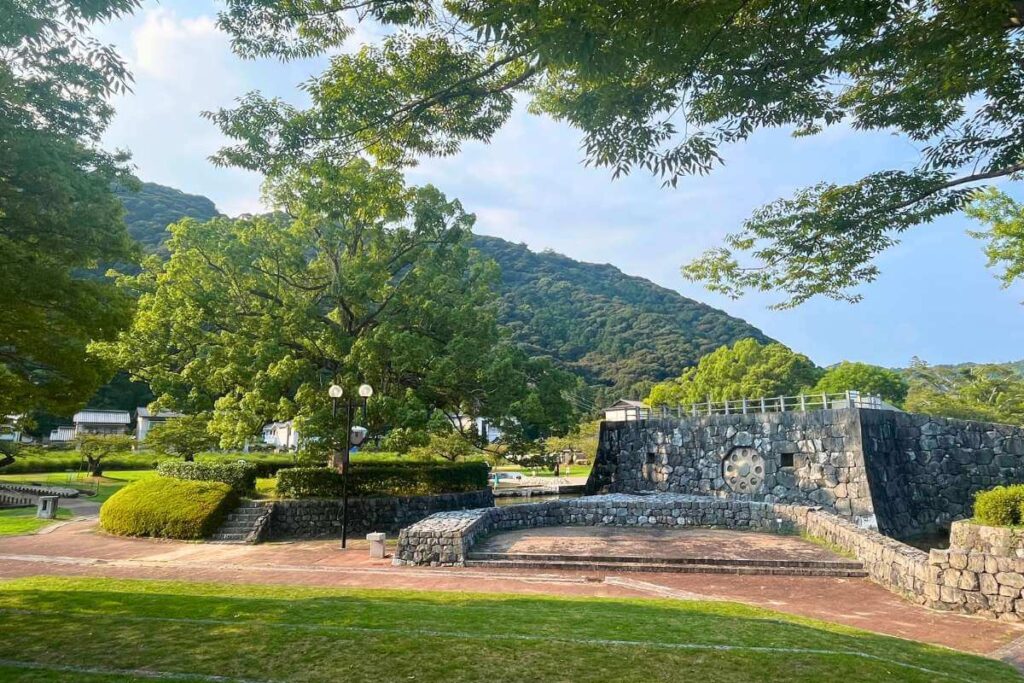
Situated just across the river near Kintai Bridge lies Kikko Park, a historic area once home to Iwakuni’s feudal lords.
Here, you’ll find several gardens, open green spaces, beautiful water fountains, traditional shrines, quaint cafes, and some of the city’s most famous museums.
A few places of particular note include the Kashiwabara Museum (formerly known as Iwakuni’s Art Museum), the Iwakuni Chokokan Museum, Kikko Shrine, the Kikkawa Historical Museum, and the Iwakuni Shirohebi Museum (also known as the White Snake Museum).
The park is also home to the Iwakuni Castle Ropeway, which takes you right up the mountain to Iwakuni Castle.
Pro Tip: Kikko Park and the area around Kintai Bridge are home to thousands of cherry trees. So the area is incredibly beautiful and very popular during the cherry blossom season. If you’re there around this time, I definitely recommend checking it out – just be prepared for the crowds.
Behold Iwakuni Castle
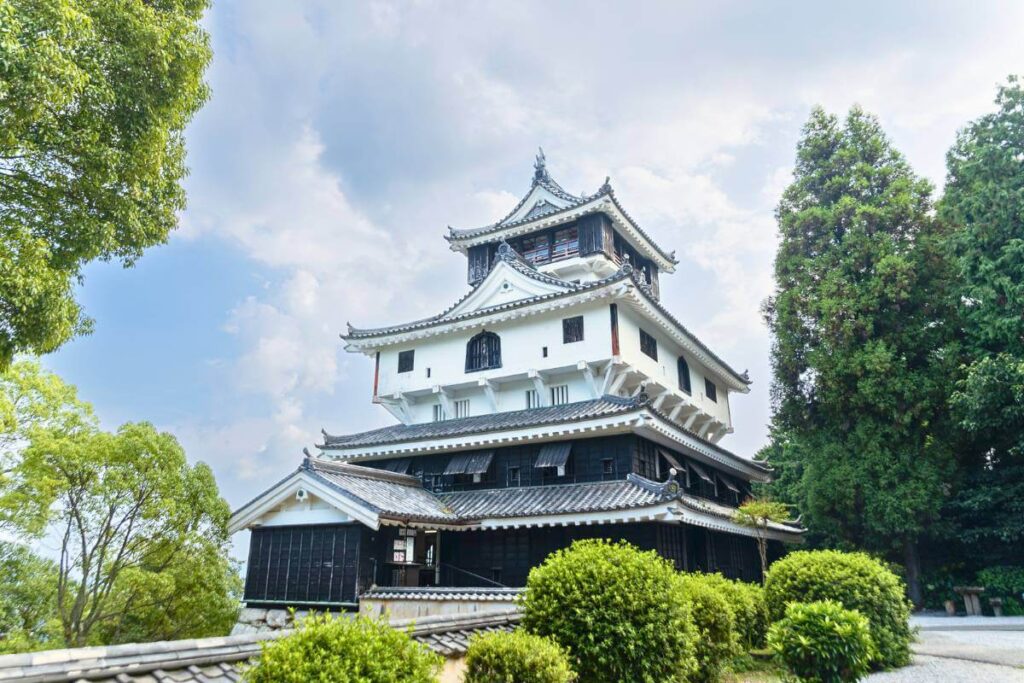
Dating back to the Edo Period in the 1600s, Iwakuni Castle is one of the city’s most famous attractions – and visiting it is one of the best things to do in Iwakuni.
Perched high atop Mount Shiroyama, this historic reconstructed castle offers incredible views of Iwakuni.
As shared above, the castle is accessible via a ropeway, which departs right from Kikko Park. Or you can hike up the mountain if you’d like to get in a bit of exercise.
There are several trails that you can choose from, but the most popular is a paved path that begins in Kikko Park.
Once at the castle, you’ll find a small museum, where you can learn more about the history of Iwakuni.
Visit Shirohebi Shrine
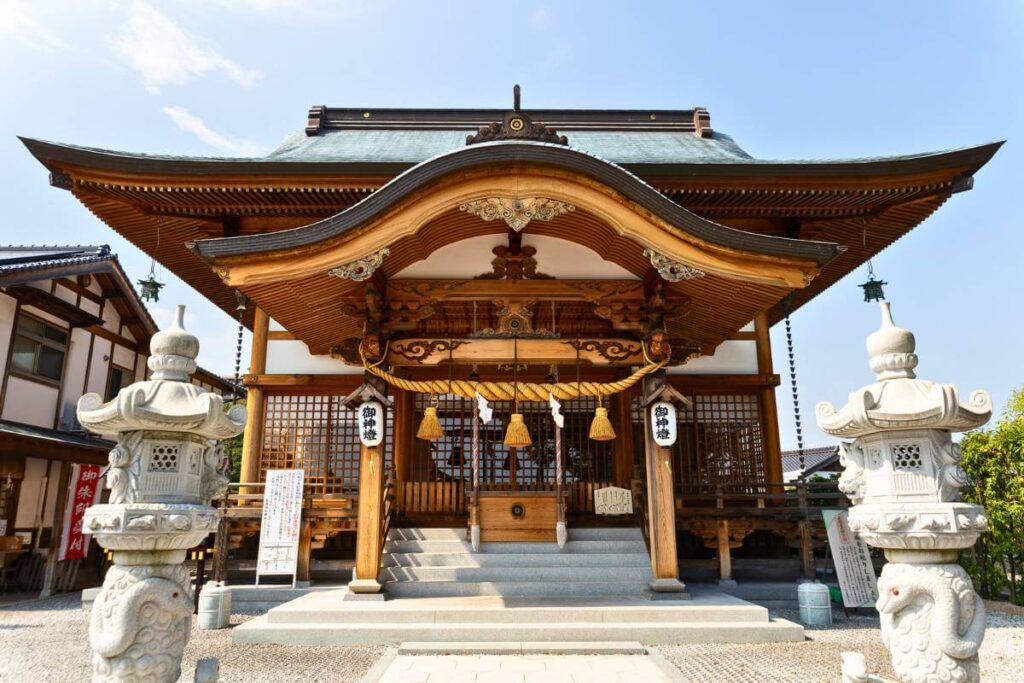
Known informally as the White Snake Shrine, Shirohebi is a Shinto shrine dedicated to the white snakes of Iwakuni.
Historically, throughout much of Japan, white snakes have been highly regarded as sacred embodiments or messengers of the gods. And, in Iwakuni specifically, the snakes were especially prized because they helped protect the city’s rice houses from mice and insects.
Today, white snakes are still very much an important and symbolic symbol within Iwakuni.
At the Shirohebi Shrine, you’ll find several statues and sculptures of the snakes. As well as outdoor enclosures, home to local white snakes.
Check Out Downtown Iwakuni
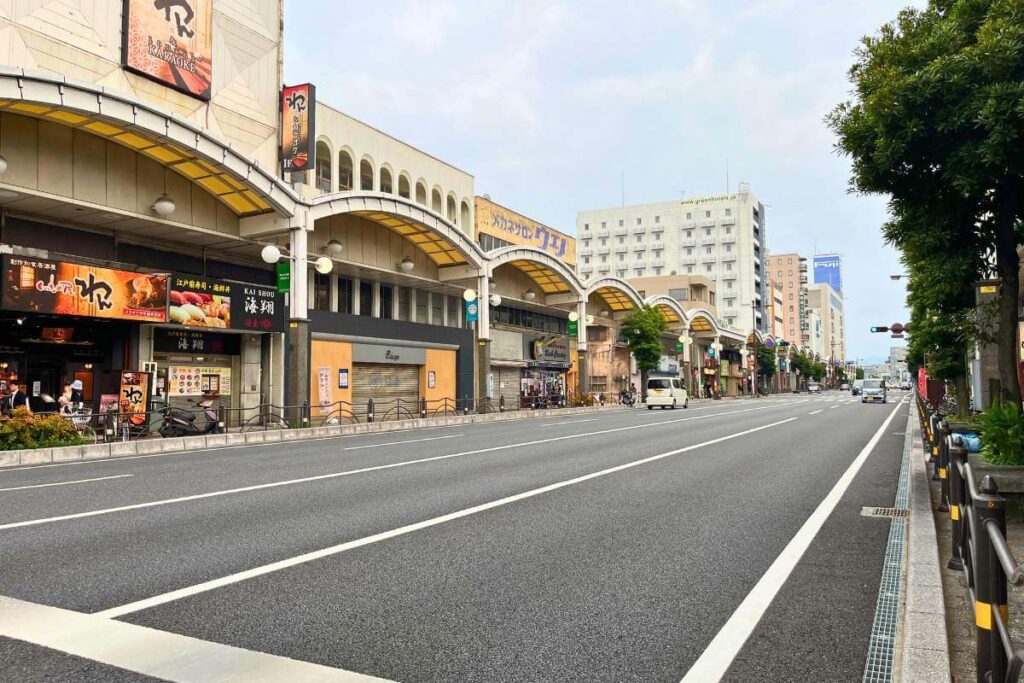
Situated in the heart of the city, downtown Iwakuni is home to a wide variety of local businesses and urban amenities.
From restaurants to cafes, bars, clubs, and boutique stores, the area is a great place to go to eat, drink, and buy a few souvenirs.
Some of my favorite spots include Kaisugi Ramen and ShabuJin for Japanese food, Fukuoka for Italian food, and Cafe Rob for fluffy pancakes.
There are also several hotels located in this area. So, if you decide to spend a night or two in the city, you may very well end up staying here.
Admire Iwakuni’s Waterfalls
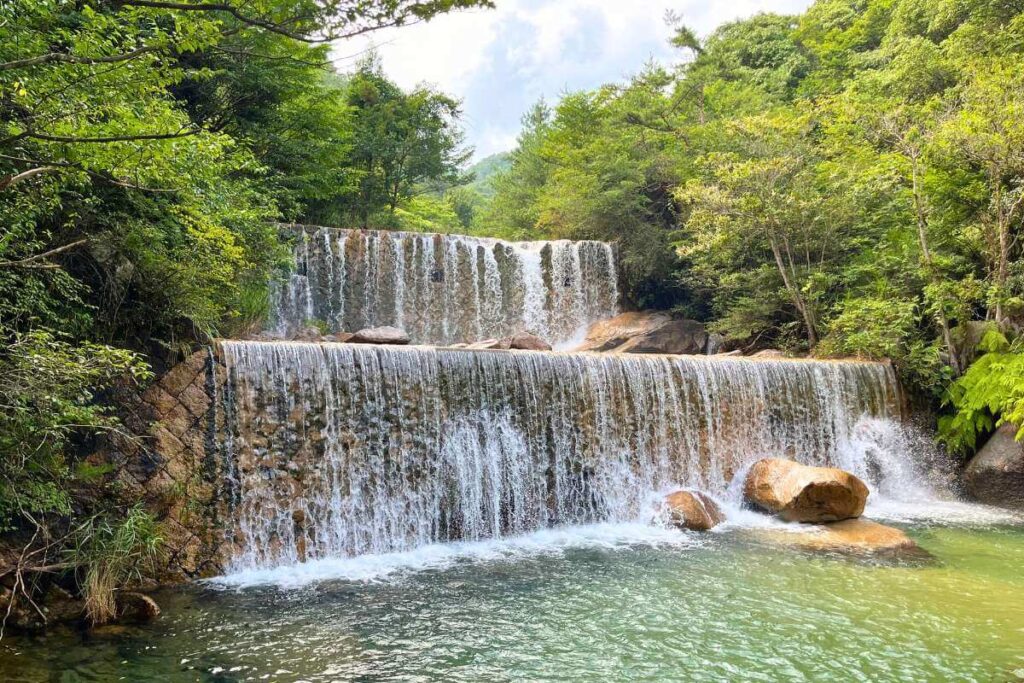
One of the waterfalls at Kinryuno Falls.
The city of Iwakuni is surrounded by incredible scenery – which includes several stunning waterfalls.
The closest and easiest one to reach is Umezu Falls, also known as Two Deer Falls. Here, you’ll find a relatively easy trail that leads to a serene swimming hole framed by a cascading waterfall.
Another nearby gem is Jakuchikyogoryuno Falls, which is locally known as Seven Falls due to its collection of seven distinct waterfalls.
And finally, just beyond Iwakuni, on the way to Miyajima Island, there’s Kinryuno Falls and Imosenotaki Park & Falls – both of which offer scenic waterfalls.
Pro Tip: The roads that lead to these waterfalls can be very tight and windy. So, be cautious and only proceed if you’re comfortable driving in these types of conditions.
Go For a Swim at Yuu Beach
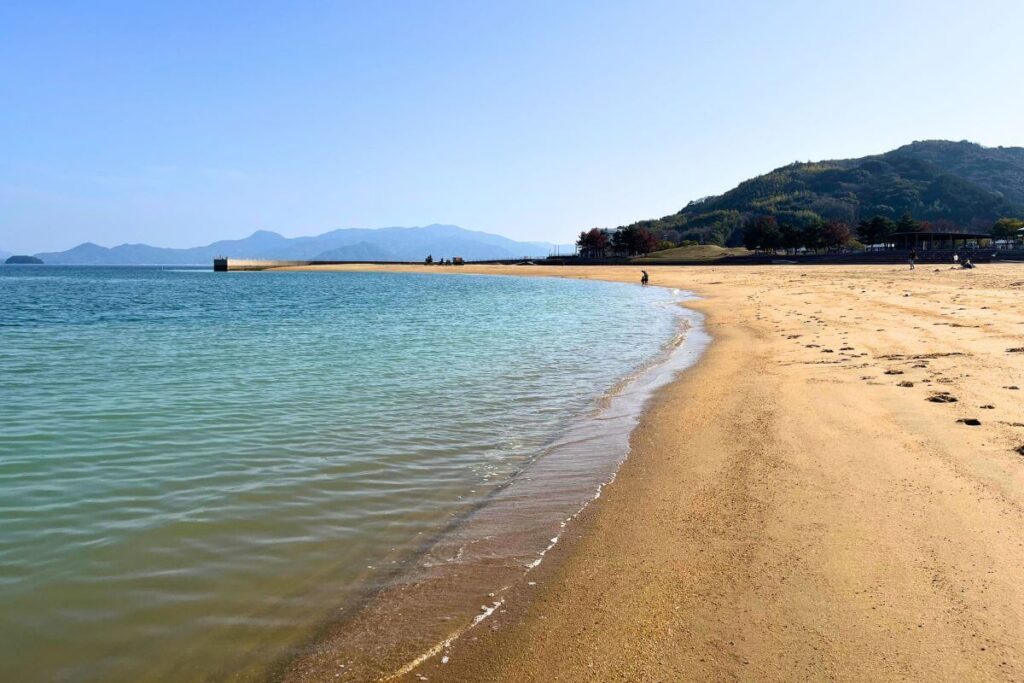
Offering soft sandy shores and incredible ocean views, Yuu Beach is a great place to go and cool off during the summer months.
Here, you’ll find not just the beach itself, but also several amenities including a restaurant, a souvenir shop, a museum, restrooms, and numerous vending machines.
The area is quite popular in summer, so it’s best to get here early, especially if you’re planning a beach day.
Also, be sure to bring sun protection – either a UV umbrella or beach tent – the sun in Japan is very hot and strong!
Pro Tip: You can visit Yuu Beach any time of the year – although you won’t always be able to swim (the water gets quite cold in the winter). Regardless, it’s still a nice place to walk and take in views of the Seto Inland Sea.
Explore the Underground Kingdom of Mikawa Mu Valley
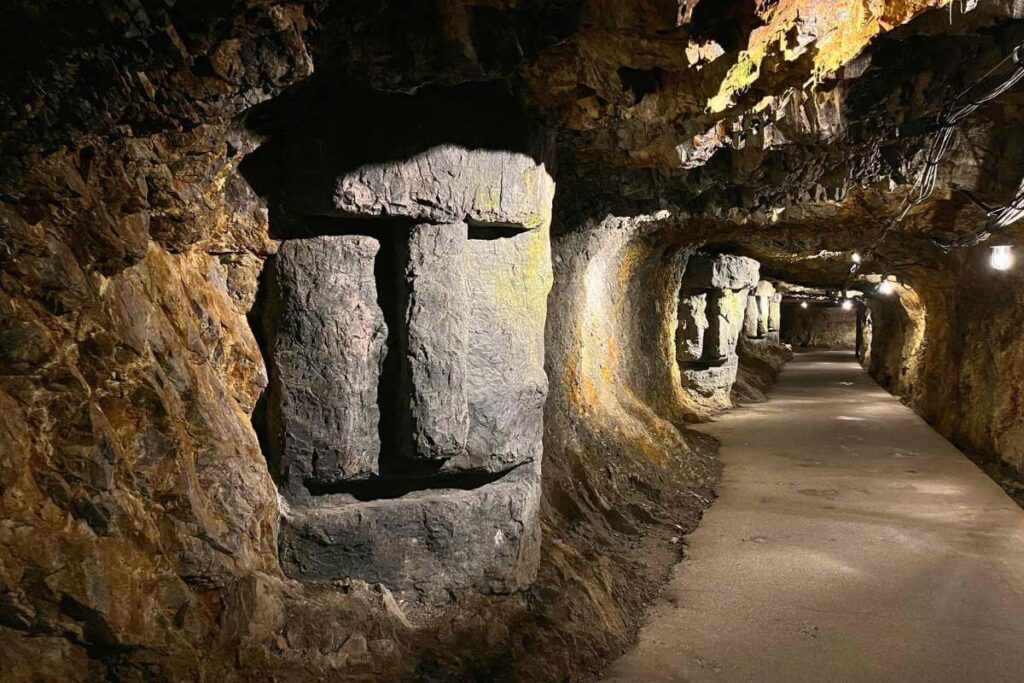
Situated about an hour outside of the city center, Mikawa Mu Valley is an underground adventure theme park that offers fun for all ages.
Encompassing about 1 kilometer of underground tunnels, this park was once the site of a tungsten mine. However, when the mine was abandoned, the tunnels were repurposed into the amusement park that it is today.
Visitors to the park have the opportunity to explore its many tunnels, which feature “ancient” Inca statues and other relics from the lost world of Mu (aka Atlantis).
There’s even a puzzle that you can attempt to solve – if you can find all the clues and hidden messages spread through the tunnels.
In addition to this underground world, the park is also home to a gold-panning center, a restaurant, and a souvenir shop.
Take in the Views From Mt. Daio
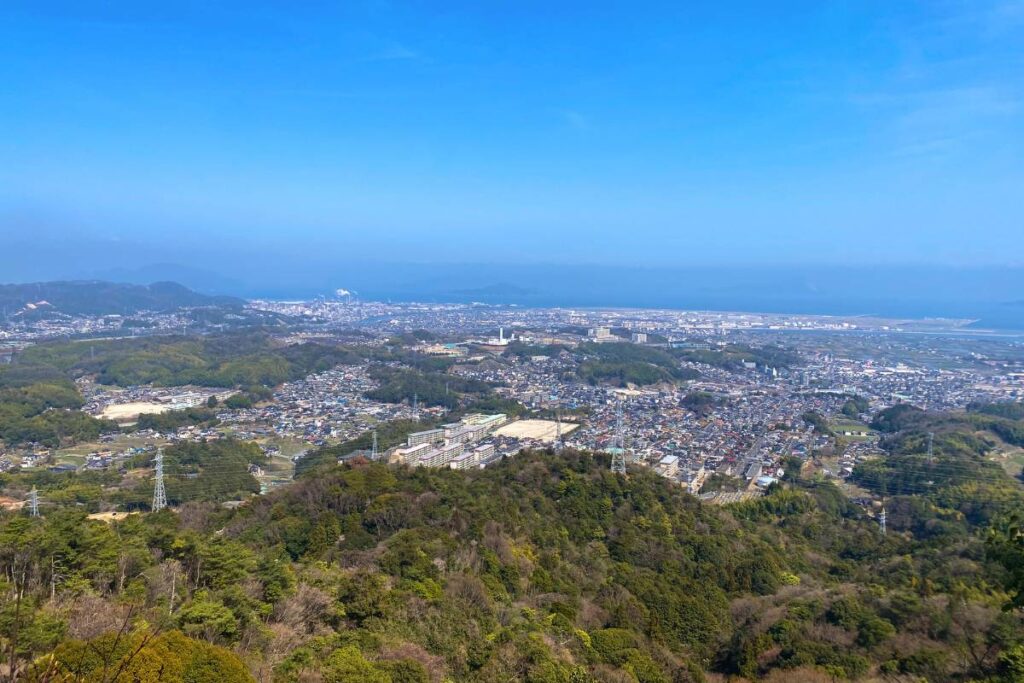
Overlooking Iwakuni, Mt. Daio offers incredible views of the city and surrounding landscape.
There are a few different trails to explore here, but my favorite begins just outside of the city center along Route 112.
The path here will lead you through a wild bamboo forest before descending up the mountain, where you’ll find several lookout points.
The trail, which is a bit strenuous, spans about 5 miles out and back.
Experience Local Festivals
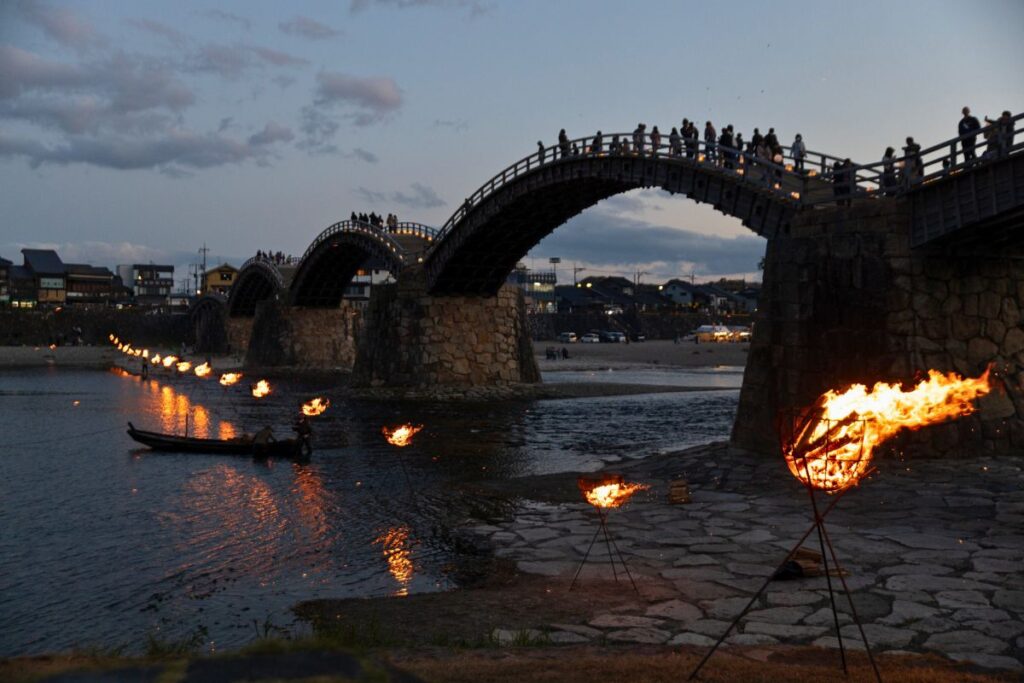
Kintai Bridge during the Kintaikyo Art Festival.
Throughout the year, Iwakuni hosts a number of cultural festivals and events that are open to visitors.
Here are a few of the most popular:
- Kintaikyo Bridge Festival: Held in late April, the Kintaikyo Bridge Festival is an annual festival meant to commemorate Iwakuni’s samurai past. The event, which features locals dressed as feudal lords and samurais, includes a parade, traditional drumming, and martial arts performances.
- Kintaikyo Art Festival: To celebrate local artists, the city of Iwakuni hosts an annual art festival at the Kintai Bridge. In addition to artistic displays, the festival features traditional performances as well as the lighting of several bonfires.
- Cherry Blossom Festival: During cherry blossom season, the area around Kintai Bridge is lit up with colorful lights. And local vendors come out to set up food trucks offering a wide array of Japanese fare.
- Fireworks Festival: Every summer, the city of Iwakuni sets off fireworks around the city. While these can be enjoyed along the harbor on most weekends, the big event takes place in early August at Kintai Bridge.
If you can time your visit so you’re able to attend one of these events, I highly recommend doing so!
7 Great Day Trips from Iwakuni
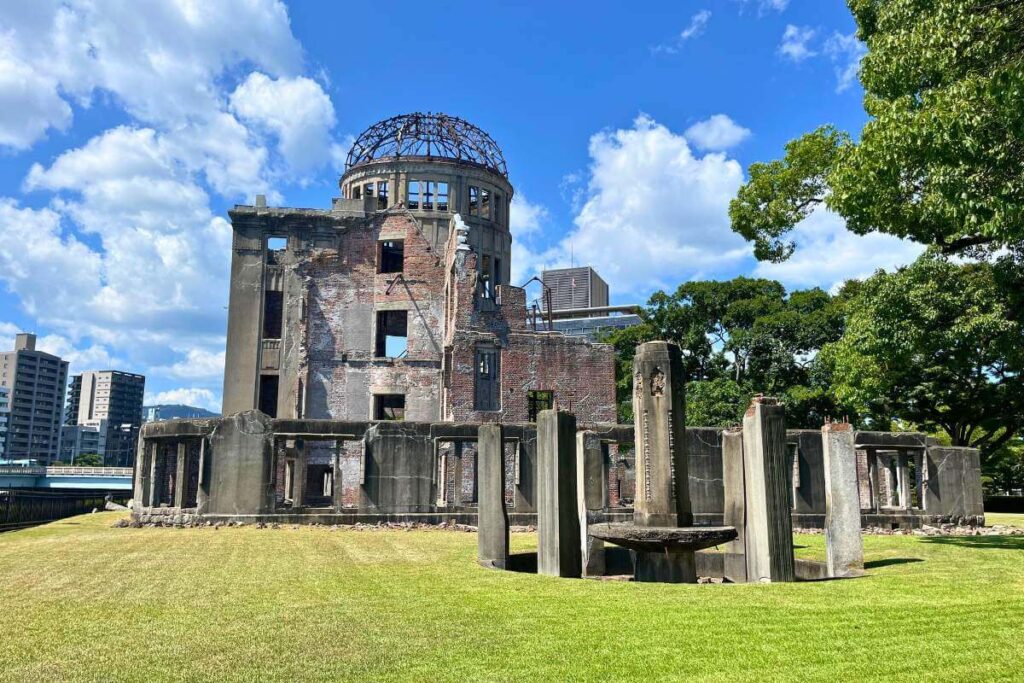
The Atomic Dome in Hiroshima, Japan.
If you have extra time to spare, consider exploring these nearby destinations!
- Hiroshima: Situated an hour north of Iwakuni, Hiroshima is a historic city with a tragic past. While the Peace Memorial Museum and Park are the main attractions here, the city has much more to offer. From scenic coastal views to historical landmarks, and delectable local cuisine, Hiroshima makes for a great day trip.
- Miyajima Island: Known for its sacred sites, friendly wildlife, and stunningly scenic views, Miyajima is a popular day trip destination. And it’s located less than an hour away from Iwakuni!
- Onomichi: Dubbed the City of Hills, Onomichi is a lesser-known destination situated 2 hours north of Iwakuni. Here, you’ll find historical temples, stunning coastal views, and unforgettable local cuisine. The city also happens to be a gateway to the Geiyo Islands, a group of scenic islands that dot the Seto Inland Sea.
- Suo-Oshima Island: Located about 45 minutes south of Iwakuni, Suo-Oshima is an island paradise. Home to pristine beaches, picturesque palm trees, and incredible ocean views, it makes for the perfect summer getaway.
- Yamaguchi City: The capital city of Yamaguchi Prefecture, Yamaguchi City lies about an hour and a half inland. Here, you’ll find historic temples, beautiful gardens, and a number of relaxing onsens.
- Mine: Nestled amongst the mountains of Yamaguchi, Mine is located about an hour and a half away from Iwakuni. A more outdoorsy destination, this small town is home to the Akiyoshidai Quasi-National Park, which is known for its incredible caves.
- Tsuwano: Situated just across the border in Shimane Prefecture, Tsuwano is a small castle town that can be reached in about 2 hours. Here, you’ll find several historic samurai homes, a stunning Shinto shrine, and the ruins of Tsuwano Castle.
Frequently Asked Questions About Visiting Iwakuni, Japan
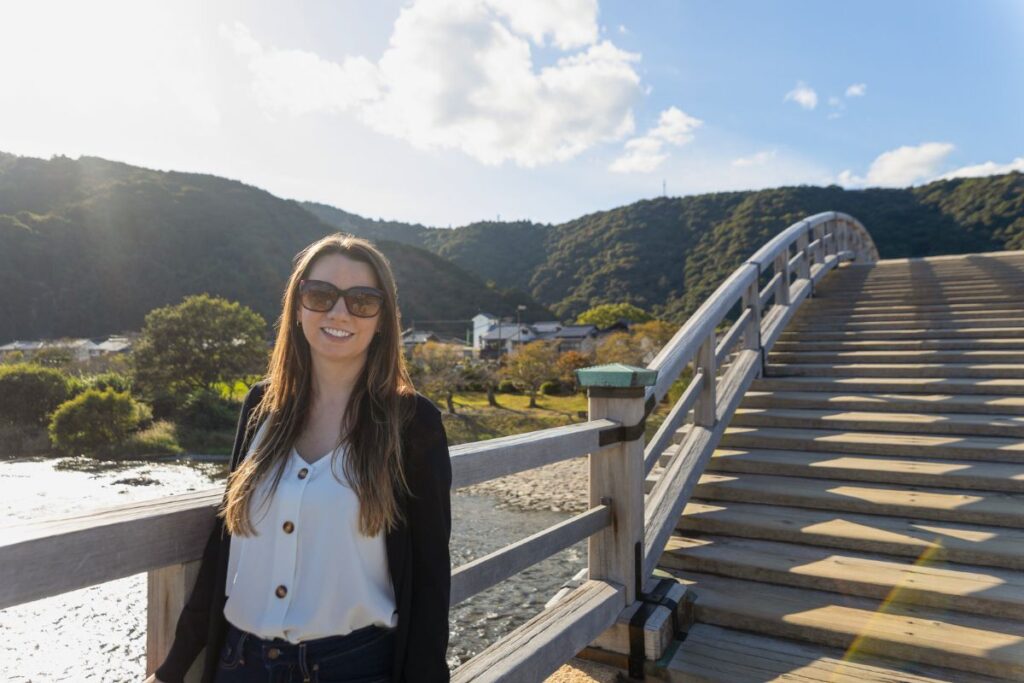
Here are my thoughts on some commonly asked questions about visiting Iwakuni.
What Is Iwakuni Known For?
Iwakuni is really known for two things – its rich history and its incredibly scenic views. As a former castle town, the city is home to several historic landmarks and structures, including the famous Kintai Bridge. On top of that, its unique location, nestled between the mountains and the Seto Inland Sea, provides stunning views of the countryside and the coastline.
Is Iwakuni Worth Visiting?
Yes, Iwakuni is definitely worth visiting! It may lie a bit off the beaten path, but this allows it to offer more unique and authentic experiences. In addition to this, there are so many amazing things to do in Iwakuni. From historical landmarks to cascading waterfalls, towering mountains, and lively festivals – you’ll have no problem keeping yourself entertained!
How Far Is Iwakuni From Tokyo?
Iwakuni is quite far from Tokyo – in distance, the two cities are about 850 kilometers apart. This equates to about a 10-and-a-half-hour drive or a 5-hour train ride via the Shinkansen. If you’re short on time, you can also fly. The flight from Tokyo to Iwakuni only takes about an hour and a half.
How Do I Get From Iwakuni to Hiroshima?
The fastest way to travel between Iwakuni and Hiroshima is via the Shinkansen, which takes about 15 minutes. Alternatively, you can also take the local train, which offers travel times of up to an hour. The local train departs from Iwakuni Station, while the shin departs from Shin-Iwakuni Station – both arrive at Hiroshima Station. If you have a car, you can also drive between the two cities. This, however, can take up to an hour and a half depending on traffic.
Final Thoughts: Things to Do in Iwakuni, Japan
So there you have it – my complete guide on things to do in Iwakuni! Hopefully, this article is helpful in planning your own trip to this charming city.
No matter what you decide to do, I’m sure you’ll have an incredible time. After all, Iwakuni is a truly unique destination, one that offers the opportunity to experience a more authentic side of Japan.
Are you interested in visiting Iwakuni in Yamaguchi Prefecture? If so, what are you most excited to do? Let me know in the comments below!!
Enjoy this post about things to do in Iwakuni, Japan? Pin it now for later!
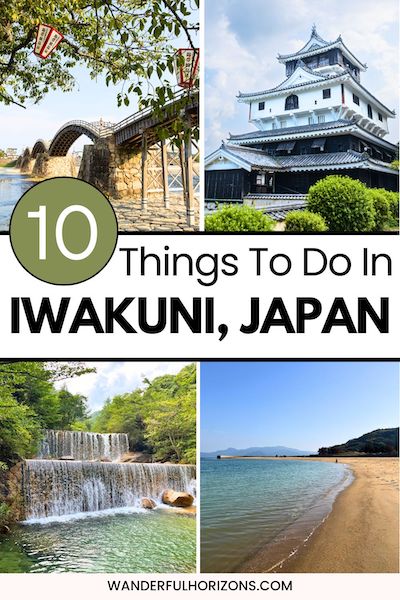
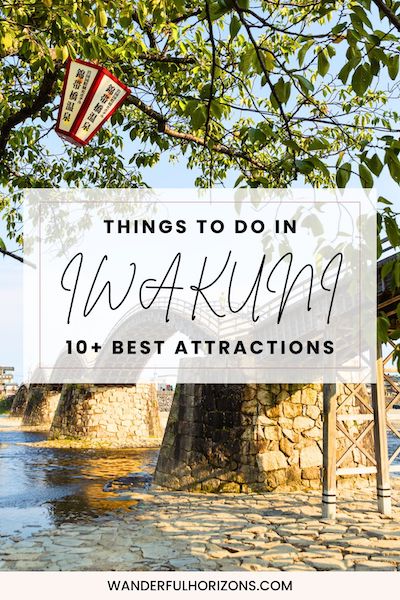
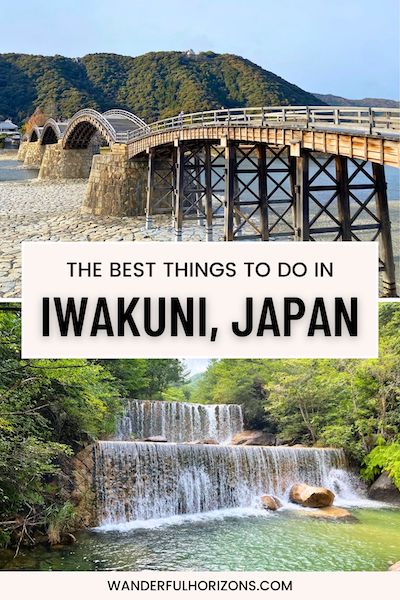

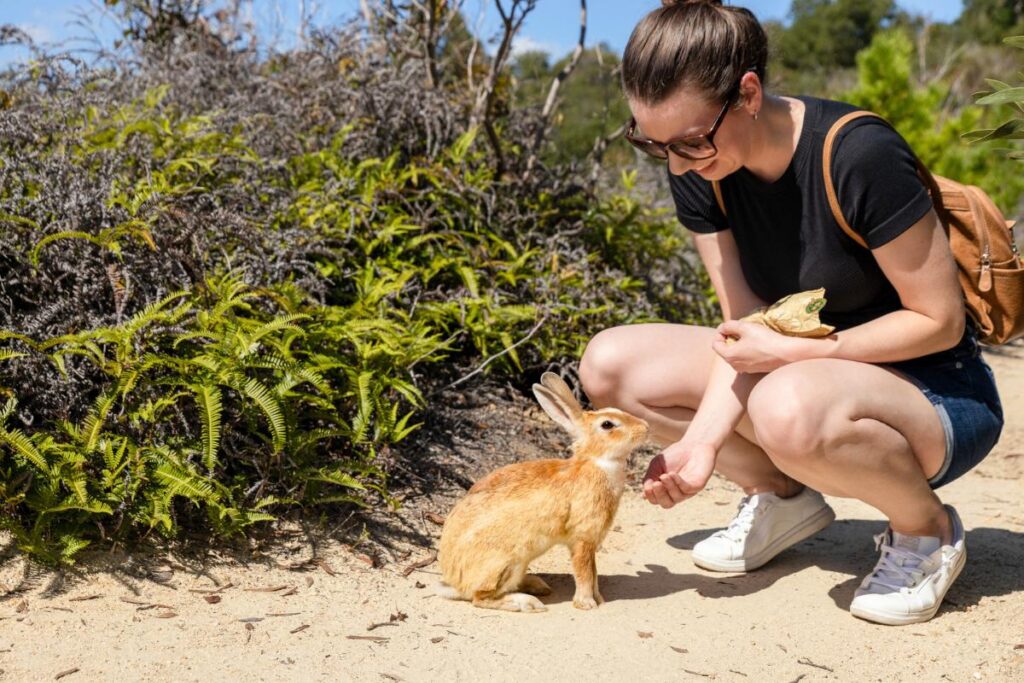
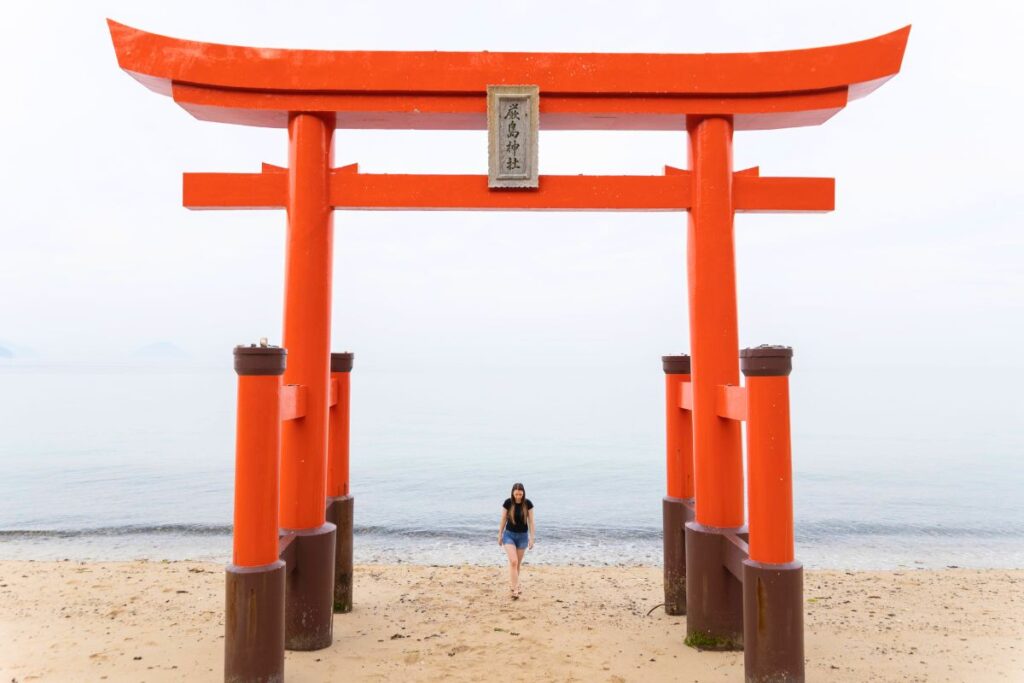
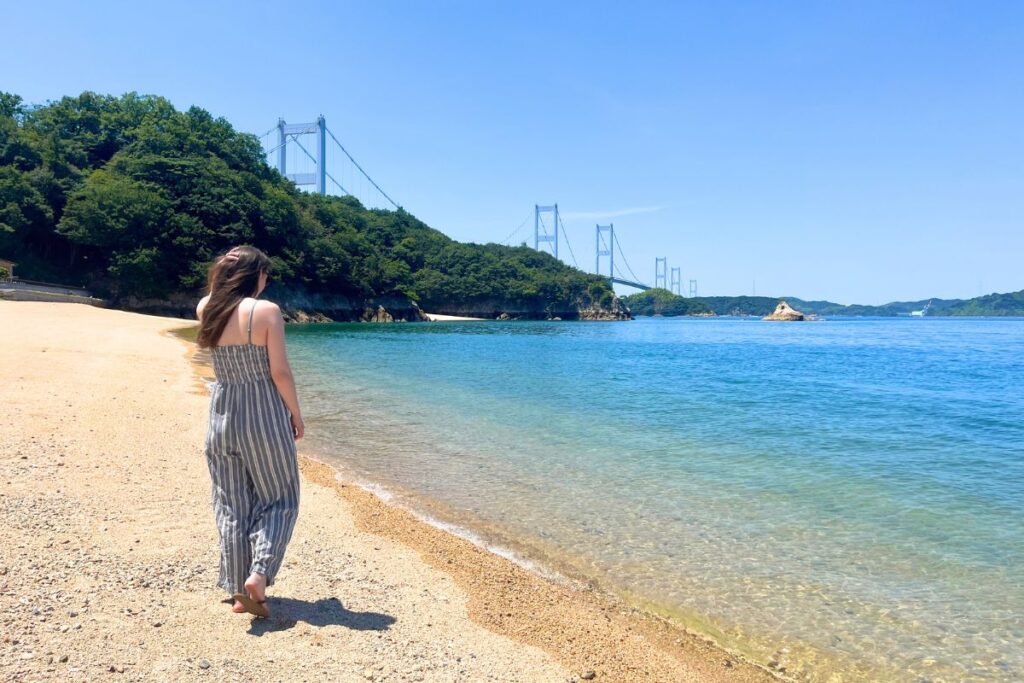
I have some friends and in-laws visiting Iwakuni, so I’ve been exploring new options to show them around. Although I’m a born and raised Iwakunian, your page helped me come up with an itinerary and gave me new ideas for places to visit. I really appreciate your work—arigato! 🙂
Thank you for your kind words – it really means a lot! I’m glad I was able to help! I hope you have a great time exploring Iwakuni with your friends and family!